
By Judy Carmack Bross
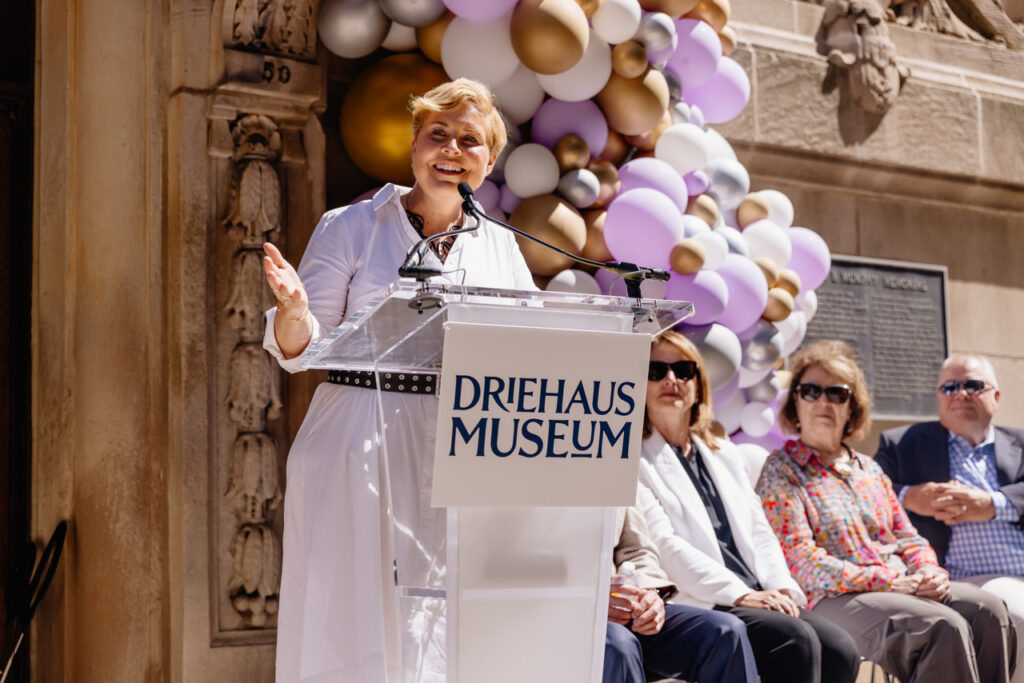
Executive Director Lisa Key at Ribbon Cutting Photo by Kyle Flubaker
Imagine the conversation that the two Chicago visionaries might have had if next-door neighbors Richard H. Driehaus and Dr. John P. Murphy could have reached out across time to speak from the Erie Street landmarks which bear their names?
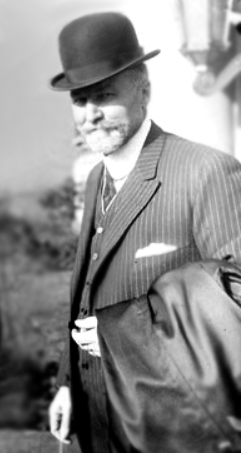
Surgeon Dr. John P. Murphy following his treatment of Theodore Roosevelt after an assassination attempt. |
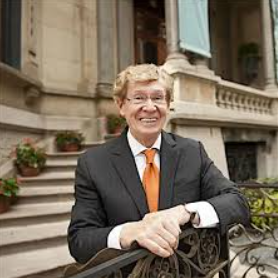
Philanthropist and collector Richard H. Driehaus
|
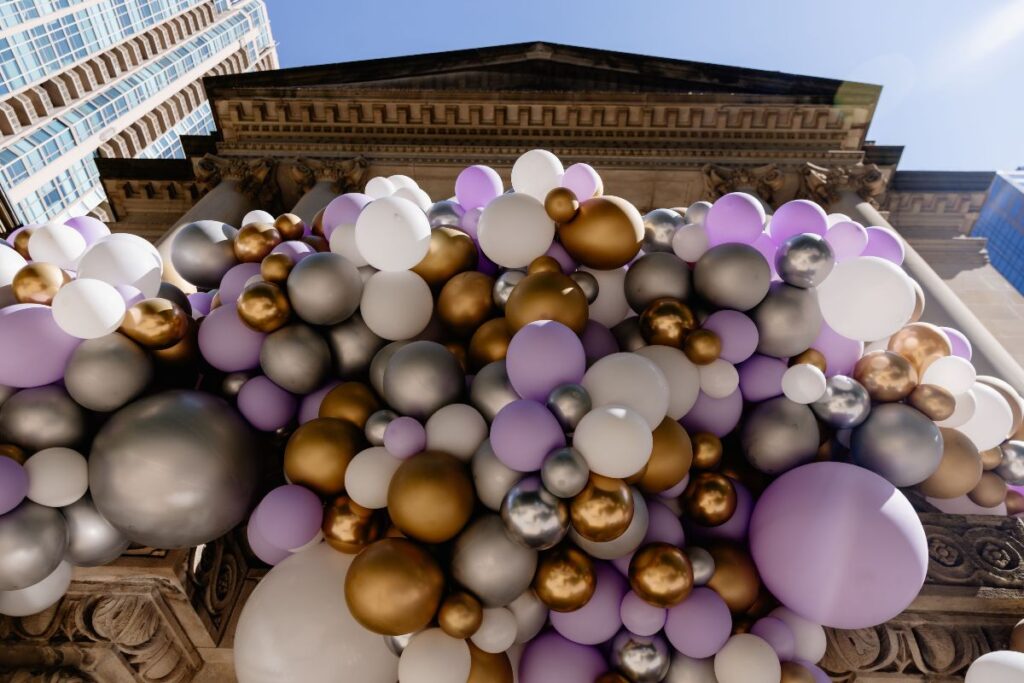
With a ribbon cutting under a canopy of purple and gold balloons—a nod to the Driehaus Museum’s lock on the Gilded Age in Chicago–landmark experts, city leaders, special guests and museum dignitaries recently celebrated a new museum campus when the Murphy Memorial Auditorium, owned by the Driehaus Museum, was opened as annex for all new programs and large events. Named for Dr. John P. Murphy, who was regarded worldwide as one of the greatest clinical educators of his generation, and for performing a life-saving surgery on President Theodore Roosevelt in 1912 following an assassination attempt.
Tall and imposing with red hair and long mustache, Murphy also treated dozens of patients during the Haymarket Riots of 1886, and had several surgical techniques which he invented named for him. Born in Appleton, Wisconsin in 1857, Murphy died in 1916 on Mackinac Island where he had been staying at the Grand Hotel. It was noted that he correctly predicted what doctors would find upon death in terms of a rare heart failure.
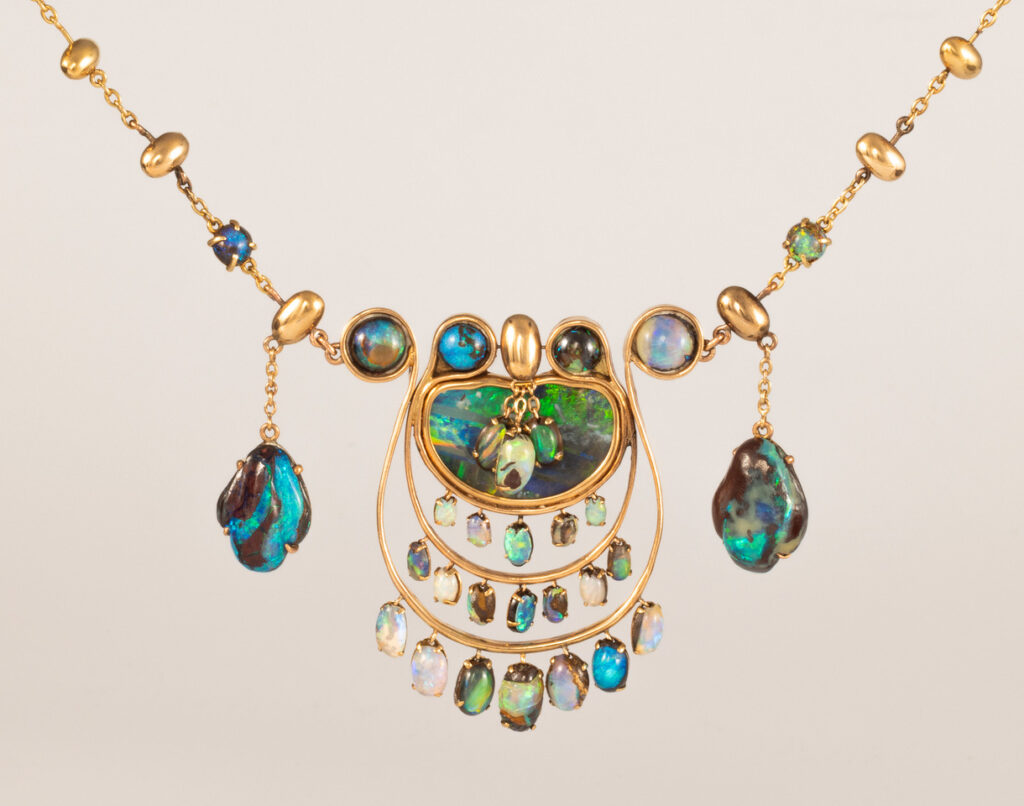
Louis Comfort Tiffany Arts and Crafts necklace, 1900, photo by Michael Tropea. Courtesy the Driehaus Museum
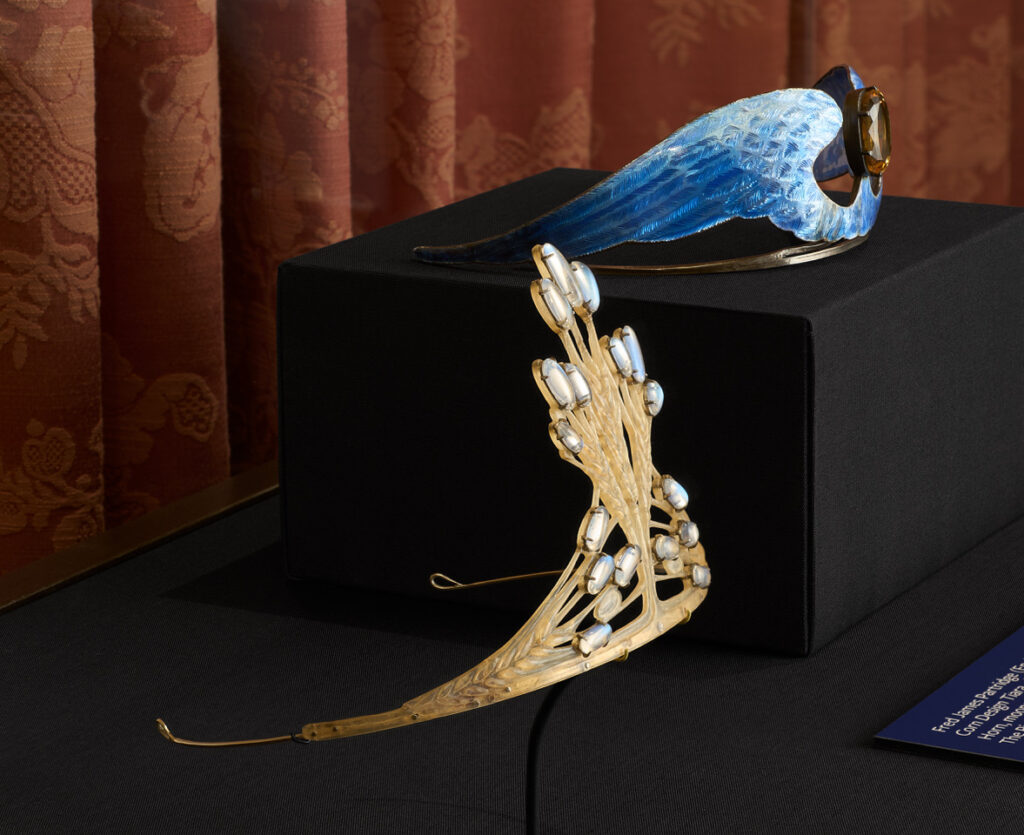
Tiaras on exhibition Photograph by Brian Griffin/ Griffin Imaging Studios. Courtesy of the Richard H. Driehaus Museum

Rene Lalique, Suzanne Statuette, 1925 Photograph by Brian Griffin / Griffin Imaging Studios. Courtesy of The Richard H. Driehaus Museum, 2024
Currently featuring through September 22 “Chicago Collects: Jewelry in Perspective”, an exhibition of over 200 pieces of rare and historically significant jewelry from the 17th century to the present–all from prominent Chicago collections–the Driehaus now can now offer a large public space for events in the Murphy Auditorium as well as areas for study, education and relaxing moments in a sculpture garden overlooking the neighborhood just off Michigan Avenue. Throughout the exhibition’s run, the Museum hosts “Jewelry Heist Nights”–screenings of classic heist films and talkbacks with film experts, including Topkapi August 15. Other events include informal visits with present-day jewelry artisans in the current show and hands-on classes where you can learn to make items popular during the Gilded Age.
Like Murphy, Driehaus was a larger-than-life kind of person who transformed the 1883 Samuel Nickerson house into one of the finest tributes to the Gilded Age where Art Nouveau and other furniture and magnificent examples of his Louis Comfort Tiffany collection are included. Driehaus bought the home in 2003 and opened it as a Museum in 2008, It continues to further his interest in focusing on art, architecture and design.

Executive Director Lisa Key
Executive Director Lisa Key told the crowd at the ribbon cutting:
“It was museum founder, Richard H. Driehaus, who had the vision to combine these historic buildings into one museum campus. Keeping the block intact is so important. Preservation and re-use really matters, doing things in a way that is no longer done. For awhile we heard daily the distant sounds of buzz saws and the like but we knew it was inspired work, contributing not only to the beauty of the block but beyond. We are so happy this vision has come to fruition and now the expansion allows us to extend our work outward in the larger community.”
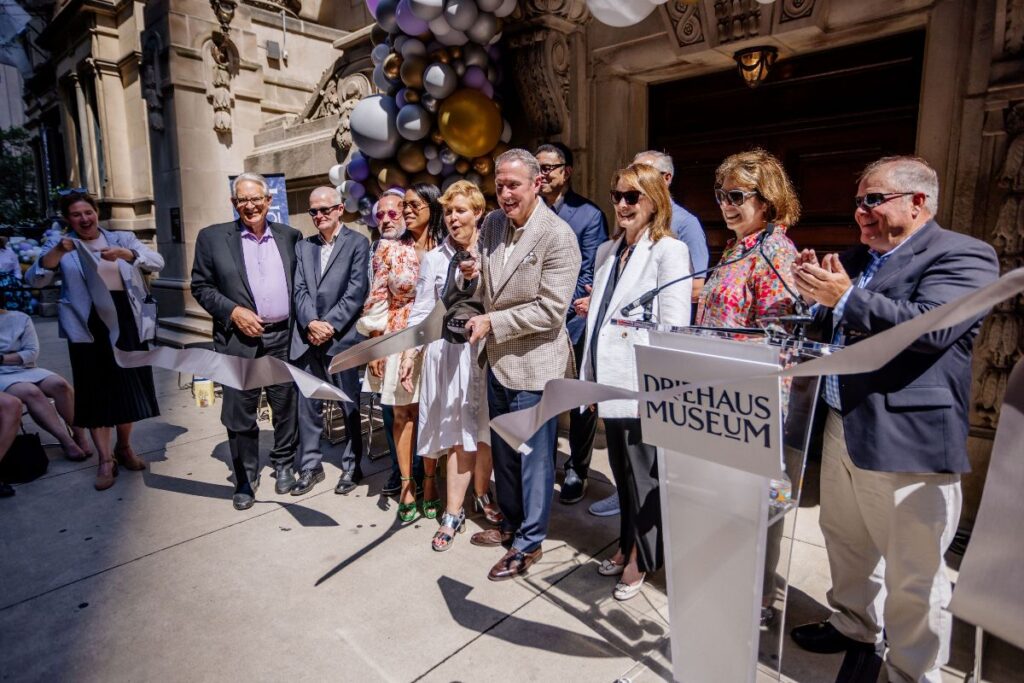
Ribbon cutting celemony Photo by Kyle Flubaker
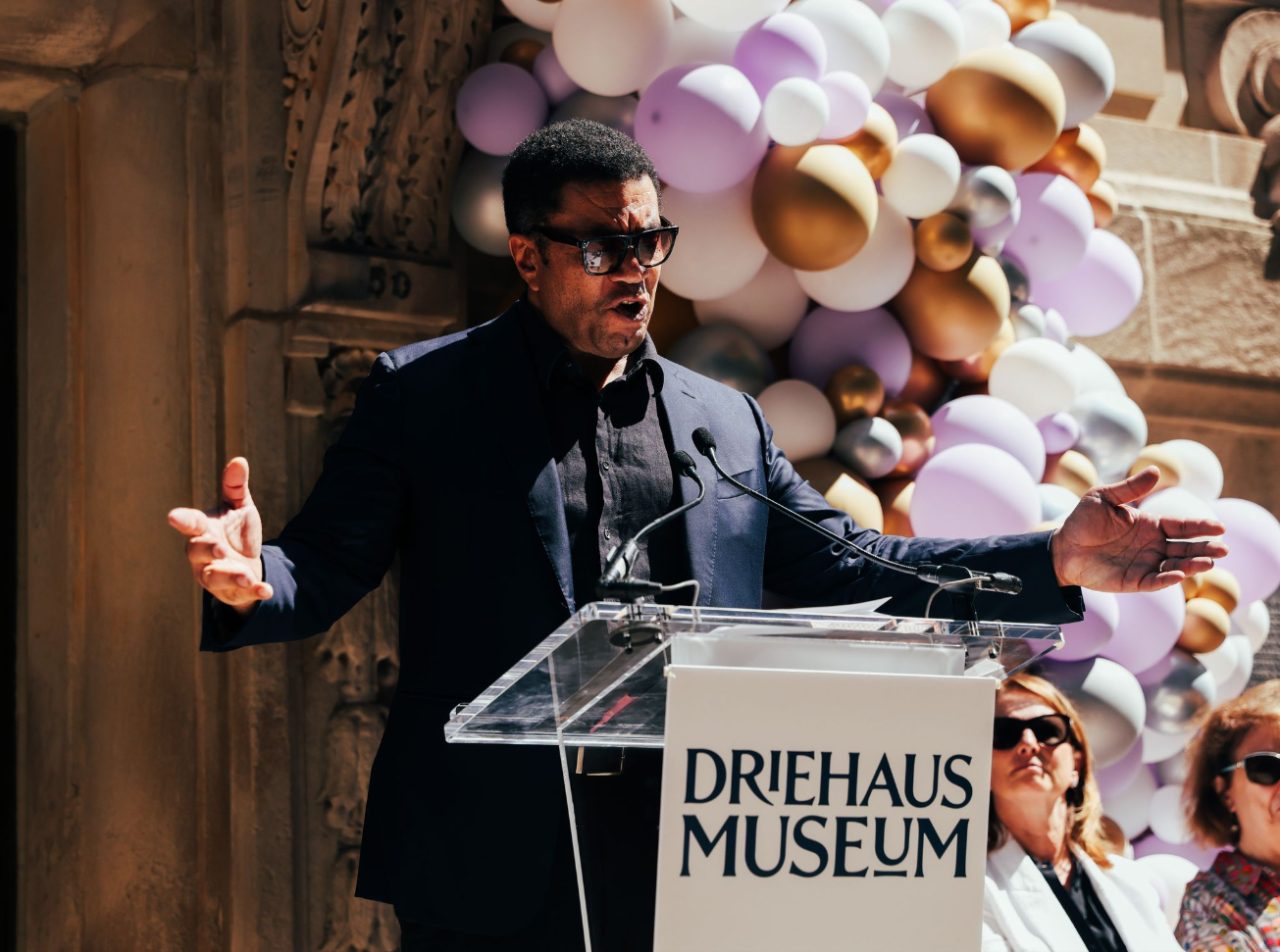
Actor Harry Lennix reads Carl Sandburg’s “Chicago”
Both Driehaus and Murphy would have felt actor Harry Lennix’s moving reading of Carl Sandburg’s “Chicago”, written in 1914, seemed just right for the day.
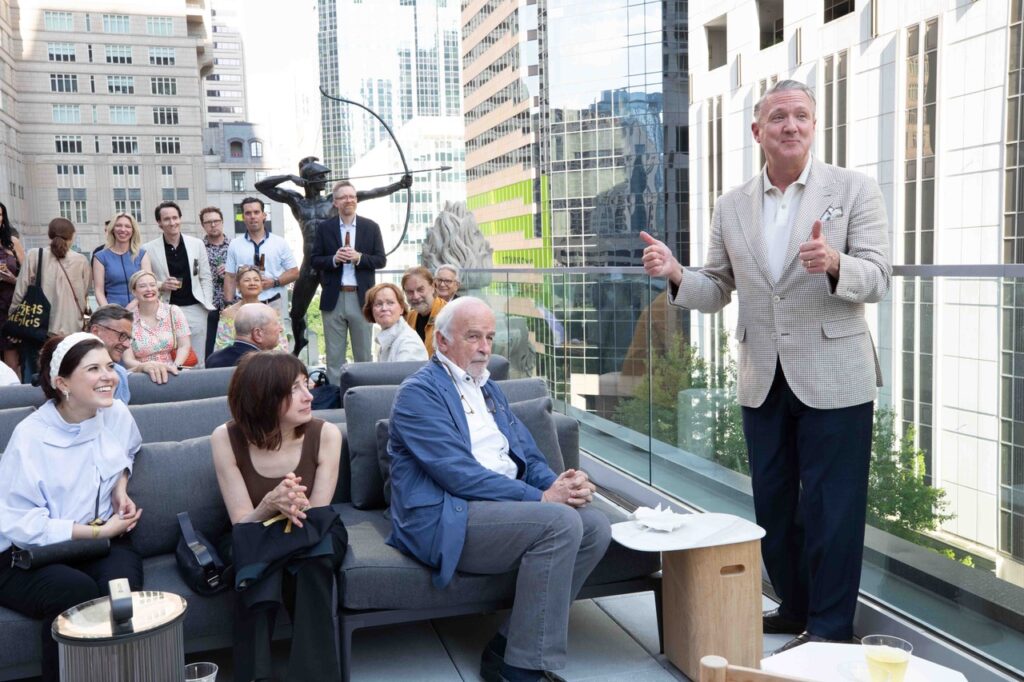
Board Chair Zachary Lazar speaking on the new sculpture terrace
In his opening remarks following a brass fanfare on a blue skied day, Board Chair Zachary Lazar reminded the audience of Richard Driehaus’s words before the grand opening on 2008: “Good architecture brings great pleasure, making people feel happier in their greater home, Chicago.” Lazar singled out Bulley and Andrews and Joe Antunovich who led the restoration of the Murphy as well as the earlier restoration of the Nickerson Mansion. Clinée Hedspeth, Commissioner of the City of Chicago Department of Cultural Affairs, said: “the buildings served as beacons to remind people that Chicago is a world-class city.”
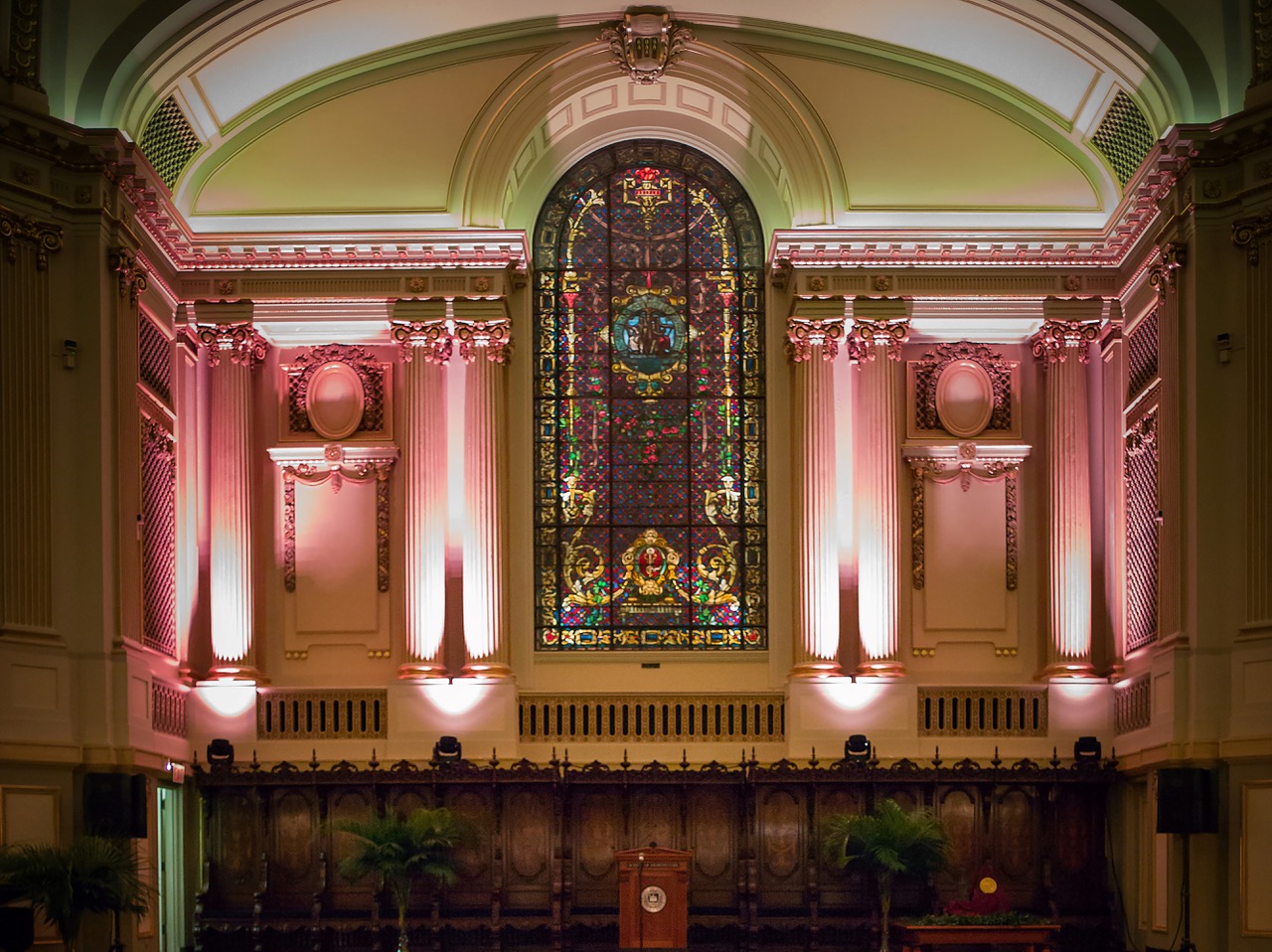
Murphy Auditorium Photo by Allen Bourgeois
Built between 1923 and 1926 by the Chicago architectural firm of Marshall and Fox, for the American College of Surgeons, for many years the six-story Murphy Auditorium served as a center for surgical research, education and the development of programs for hospital standardization.
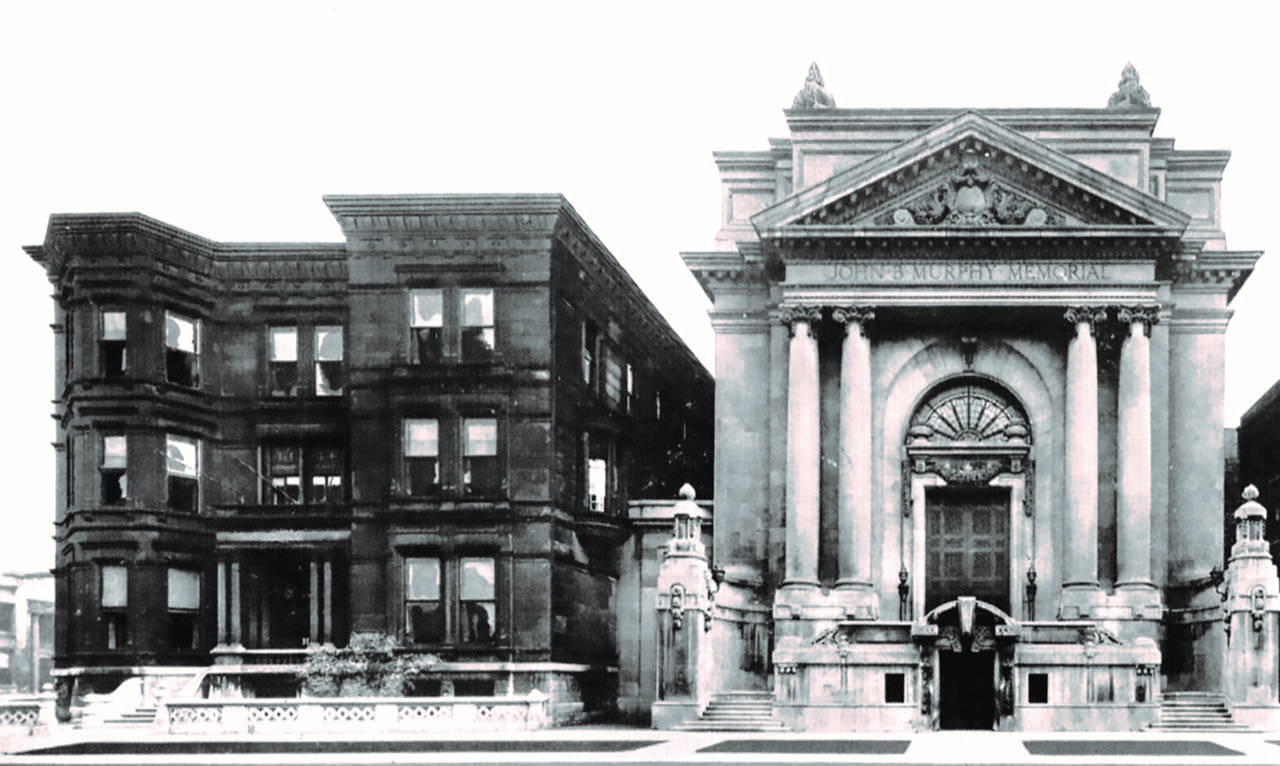
Early photo of the Nickerson Mansion alongside the Murphy Memorial Auditorium

Exterior detail on the Murphy Memorial showing the famous surgeon
Calling attention to its great bronze doors designed by Tiffany, Matt Crawford of the Commission on Chicago Landmarks told those present: “The Murphy Auditorium was red-coded to be a landmark due to its significance. John B. Murphy was key to recruiting surgeons to Chicago and international congresses were held in the 1000 seat auditorium in hopes of improving surgery which at that time was a pretty risky process. Its style is French Renaissance quite popular in Paris in the late 19th century.”
Key described the uniqueness of the Driehaus Museum:
“Sometimes you feel that when you walk in that you have just missed the original owners, that maybe they had moments before left to go out to dinner. We are really the first immersive museum of this type in our country. You find several in Europe but not here,” Key said.
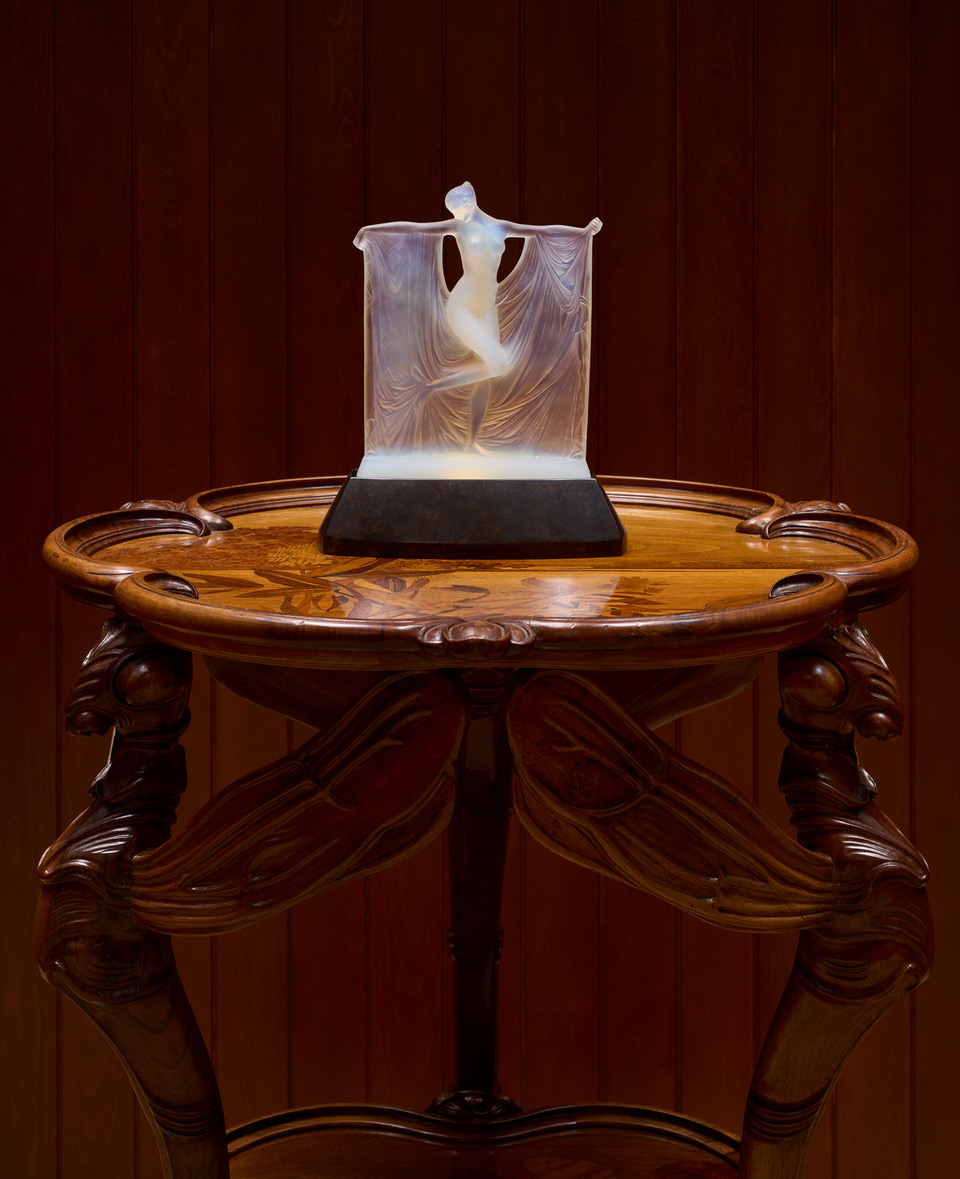
By Rene Lalique Photograph by Brian Griffin / Griffin Imaging Studios. Courtesy of The Richard H. Driehaus Museum, 2024
“There are some pieces in our current jewelry show which are of the same period and you can enjoy them in a similar environment. But all the jewelry looks wonderful here. It is not just a white box background. Most importantly, you can see how jewelry artisans really pushed boundaries of jewelry as decorative art and it is truly an art form,” Key said. “The exhibition is organized by jewelry historian and author Elyse Zorn Karlin, curator of the Museum’s 2015 exhibition ‘Maker and Muse: Women and 20th Century Art Jewelry’. When we knew that she was available we really wanted to move forward with this exhibition.”
“Chicago Collects: Jewelry in Perspective” is sponsored by Susan and Harlow Higinbotham and The USA Education Charitable Trust, and the Driehaus Trust Company, LLC.
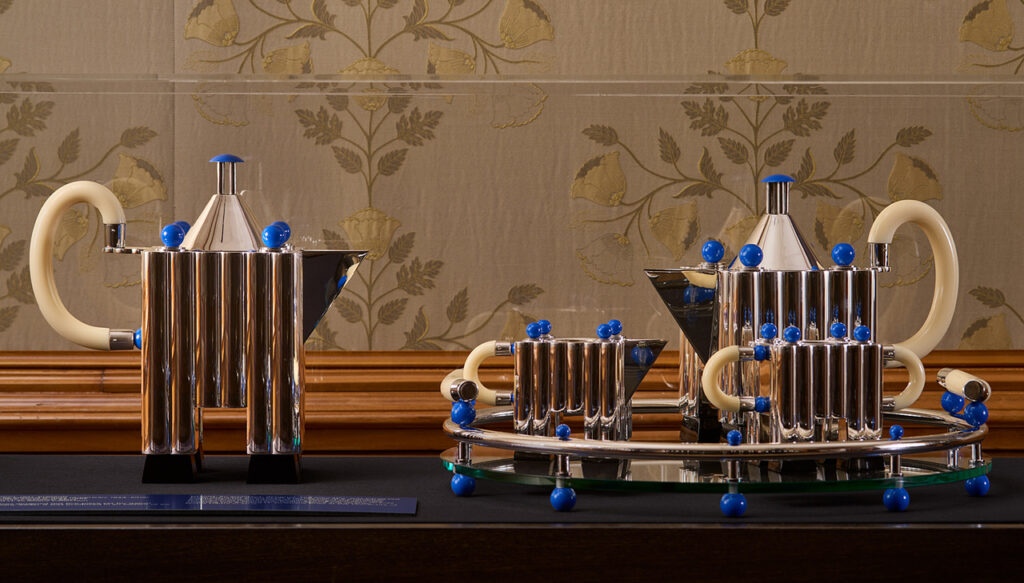
Michael Graves tea set from the 1980s. Photograph by Brian Griffin / Griffin Imaging Studios. Courtesy of The Richard H. Driehaus Museum, 2024
This first-of-its- kind exhibition includes a range of never-seen-before jewelry and decorative arts objects from the Richard H. Driehaus Collection alongside objects from the Chicago History Museum, the Field Museum, and the Lizzadro Museum of Lapidary Art, among loans from other Chicago institutions, collections, and private lenders with unique areas of focus. Items are organized into categories of collecting interest, such as Art Nouveau, Jugendstil, Vienna Secession, British Arts & Crafts, Chicago Arts & Crafts, 19th Century Revival, Belle Époque, Louis Comfort Tiffany, Art Deco, Fabergé, Important Makers, Tiaras, and Mid-Century Modern and Contemporary Jewelry.
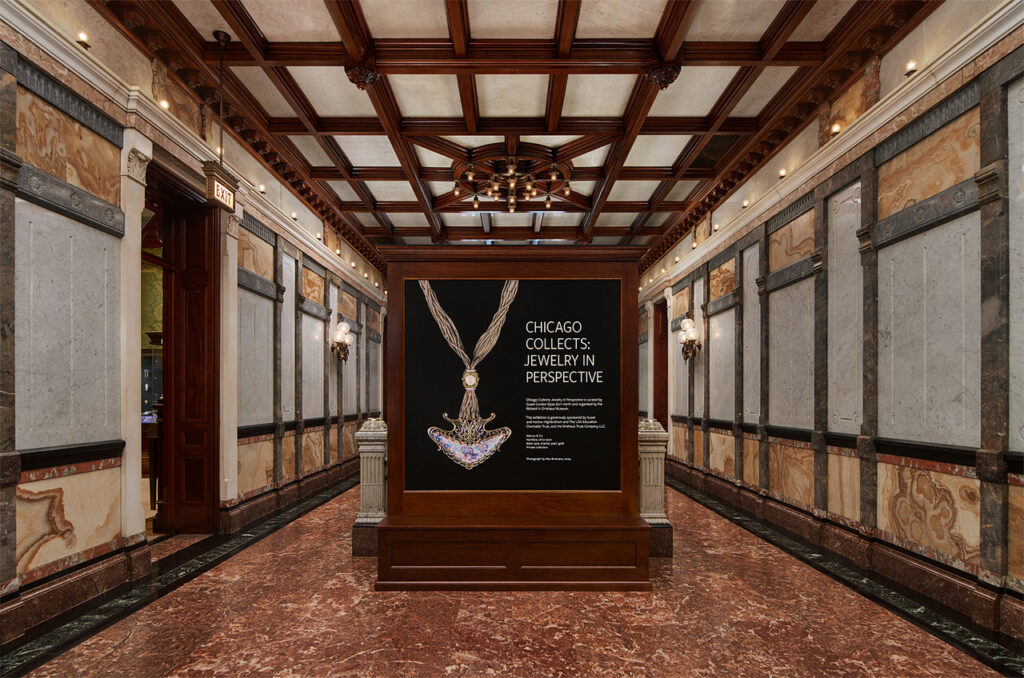
Photograph by Brian Griffin / Griffin Imaging Studios. Courtesy of The Richard H. Driehaus Museum, 2024
Highlights of the exhibition include loans from the Field Museum from the 1893 World’s Fair; a rare piece of silver made by Paul Revere, Jr.; a handwrought silver punch bowl belonging to the Cliff Dweller’s Club; jewelry renderings by Art Nouveau master Rene ́Lalique; a number of jewels and objects made by Chicago’s own Kalo Shop as well as other Chicago artists from the Arts & Crafts Movement, and more.
For more information on Chicago Collects: Jewelry in Perspective which runs until September 22, visit driehausmuseum.org






